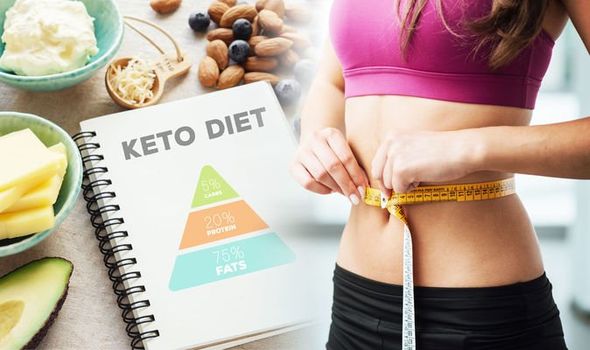If you’re looking to lose weight on the ketogenic diet, you’re in luck. This is the ultimate guide to keto diet for weight loss, and it’s packed with all the information you need to make your goals a reality. In this post, we’ll go over everything from how the keto diet works to tips for staying on track. So whether you’re just starting out or you’ve been following a ketogenic diet for a while, this post has something for you!
Contents
Defining Keto Diet
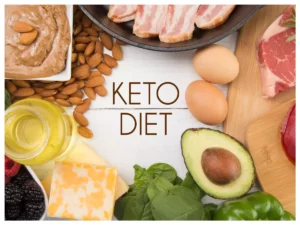
Ketogenic diet, also popularly known as the keto diet, is a low-carb, high-fat diet that offers many health benefits. In recent years, it has become a popular weight-loss strategy. The ketogenic diet works by reducing carbohydrates and replacing them with healthy fats. This change in the body’s fuel source helps to promote weight loss by inducing a metabolic state called ketosis.
In order to achieve ketosis, you need to consume a very low number of carbs (usually less than 50 grams per day). This means that you’ll need to avoid foods like bread, pasta, rice, and potatoes. Instead, you should focus on eating plenty of fresh vegetables, lean protein sources, and healthy fats.
Types Of Keto Diet
There are several different types of keto diet, each with their own set of benefits and drawbacks. The most common types are:
- The Standard Ketogenic Diet: This is the most common type of keto diet. It involves a ratio of fat to combined protein and carbohydrates of around 70-75% fat, 20% protein, and just 05-25% carbs.
- The Cyclical Ketogenic Diet: This type of keto diet is ideal for athletes or bodybuilders who need to maintain a high level of performance. It involves periods of higher carb intake (known as “carb cycling”), which can help to replenish glycogen stores and improve recovery from training sessions.
- The Targeted Ketogenic Diet: This diet is similar to the standard keto diet, but it includes an additional carb allowance around workouts. This allows for more glycogen to be stored in the muscles, which can improve performance.
- The High-Protein Ketogenic Diet: This diet is similar to the standard keto diet, but it includes a higher ratio of protein (30-40%). This is often beneficial for people who are looking to build muscle mass on a ketogenic diet.
Your specific goals and health needs will dictate which type of keto diet is right for you.
Keto Diet For Weight Loss
In recent times, keto diet has gained the attention of people who are looking for an effective weight loss solution. This is because keto diet can help you to lose weight quickly and effectively.
There are several reasons why the keto diet is effective for weight loss. Some of the most popular reasons include:
The keto diet helps to reduce appetite. This is because the high-fat content of the diet helps to increase satiety, which can help to reduce overall calorie intake.
The keto diet promotes fat loss. This is because the body is forced to burn stored body fat for energy on a keto diet.
The keto diet can help to increase metabolism. This is because the low-carbohydrate intake on a keto diet can help to increase thermogenesis, which can boost metabolism.
If you’re looking for a way to lose weight quickly and effectively, then the ketogenic diet may be right for you!
How It Works
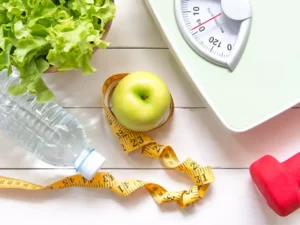
It is also important to understand the mechanisms behind how the keto diet works for weight loss. Basically, the keto diet works by shifting the body’s primary fuel source from carbohydrates to fat.
When you eat a high-carbohydrate diet, your body converts carbs into glucose and this is used for energy. However, when you consume a low-carb diet, your body is forced to burn stored body fat for energy.
This process is known as ketosis and it helps to promote weight loss by increasing metabolism and reducing appetite. This method of weight reduction has been shown to be very effective, with many people losing a significant amount of weight in a short period of time.
If you’re looking for an effective way to lose weight, then the keto diet may be right for you!
Other Benefits Of Keto Diet
In addition to weight loss, keto diet also has beneficial effects on health. Some of the most popular physical as well as mental health benefits that include:
- Improve cholesterol levels: The keto diet can help to improve cholesterol levels by increasing HDL (good) cholesterol and reducing LDL (bad) cholesterol.
- Reduce blood sugar levels: The keto diet can help to reduce blood sugar levels by stabilizing insulin levels and promoting glucose uptake into cells.
- Improve mental clarity and focus: The keto diet can help to improve mental clarity and focus by increasing ketone levels.
- Reduced risk of heart disease: The keto diet can help to reduce cholesterol and triglyceride levels, which can lower the risk of heart disease.
- Improved cognitive function: The keto diet can help to improve brain function and memory by providing an alternative fuel source for the brain (ketones).
- Reduced inflammation: The keto diet can help to reduce inflammation throughout the body, which can lead to improved overall health.
Additionally, this diet has also shown improvements for various other disorders such as:
- Multiple sclerosis
- Anxiety
- Alzheimer’s disease
- Parkinson’s disease
- Epilepsy
- Cancer
- Polycystic ovarian syndrome (PCOS)
- Type II diabetes
The keto diet is a powerful tool that can help you to lose weight, improve your health, and feel your best! If you’re looking for an effective way to improve your overall health, then the keto diet may be right for you!
Side Effects Of Keto Diet
It is important to note that there are some potential side effects associated with the keto diet. These side effects can include:
- The “keto flu”: This is a common side effect that occurs when your body is adjusting to the low-carbohydrate, high-fat ketogenic diet. Symptoms can include fatigue, headaches, brain fog, and irritability.
- Kidney stones: The keto diet can increase the risk of developing kidney stones due to the increased excretion of calcium in the urine.
- Low blood sugar: The keto diet can cause low blood sugar levels, which can be dangerous for people with diabetes.
- High cholesterol: Although some level of cholesterol is necessary, the keto diet can increase LDL (bad) cholesterol levels, which can lead to heart disease.
- Nausea: The keto diet can cause nausea and vomiting due to the increased fat intake.
- Constipation: The keto diet can cause constipation due to the lack of fiber in the diet.
- Irritability: The keto diet can cause irritability due to the lack of carbohydrates in the diet.
- Muscle cramps: The keto diet can cause muscle cramps due to the lack of electrolytes in the body.
- Dizziness: The keto diet can cause dizziness due to the lack of carbohydrates in the diet.
- Bad breath: The keto diet can cause bad breath due to the increased production of ketones in the body.
These side effects are typically temporary and will resolve as your body adjusts to the ketogenic diet. However, it is important to consult with a healthcare professional before starting any new diet, especially if you have a medical condition or are taking medication.
Managing Side Effects
If you experience any of these side effects, then it is recommended that you speak with a healthcare professional. Additionally, there are some measures that you can take to minimize these side effects, such as:
- Drinking plenty of water: This will help to flush out the ketones from your body and prevent dehydration.
- Increasing salt intake: This will help to replenish the electrolytes in your body and prevent muscle cramps.
- Eating more high-fiber foods: This will help to alleviate constipation.
- Getting plenty of rest: This will help to reduce fatigue and brain fog.
If you experience any severe side effects, then it is important to seek medical attention immediately.
How To Start A Keto Diet
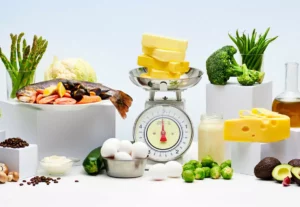
Now that we’ve covered the basics of the keto diet, let’s talk about how you can start a keto diet. Starting a keto diet is actually very simple, and there are a few different ways that you can do it.
- The first way to start a keto diet is to simply cut out all of the carbohydrates from your diet. This means eliminating all types of breads, pasta, rice, potatoes, fruits, and sugary foods from your diet.
- Once you’ve eliminated carbs from your diet, then you’ll need to replace them with other food sources. The best way to do this is by eating plenty of healthy fats and proteins. Good sources of healthy fats include avocados, olive oil, nuts, and seeds. Good sources of protein include meat, fish, eggs, and dairy products.
- You may want to start with mapping and pre-planning your meals. This can help you to stay on track and make sure that you’re getting all of the nutrients that you need. There are plenty of resources available online to help you with this, such as this keto diet meal plan.
- Another way to start a keto diet is to use a pre-made meal plan or food delivery service. This can be a great option if you’re short on time or don’t want to deal with the hassle of meal planning. There are plenty of keto-friendly meal plans and food delivery services available, so be sure to do your research before choosing one.
- Another way to start a keto diet is to use a keto diet calculator. This will help you determine how many carbs, fats, and proteins you should be eating each day. There are a variety of different keto diet calculators available online, so be sure to find one that fits your specific needs.
No matter which method you choose, starting a keto diet is simple and easy! Just be sure to speak with a healthcare professional before making any changes to your diet. And always remember – weight loss is not a sprint, it’s a marathon! So be patient and consistent, and you’ll reach your goals in no time!
Keto Food List
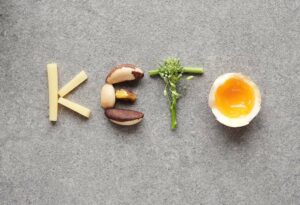
Now that you know how to start a keto diet, let’s talk about what you can and can’t eat. The ketogenic diet is a high-fat, low-carbohydrate diet, which means that you’ll need to limit your carb intake and focus on eating healthy fats. Here’s a quick rundown of some of the most common keto-friendly and keto-unfriendly foods:
Keto-Friendly Foods
- Meat: Beef, pork, lamb, chicken, etc.
- Fish: Salmon, tuna, trout, etc.
- Eggs: Whole eggs, egg whites, etc.
- Dairy: Cheese, yogurt, cream, etc.
- Nuts and seeds: Almonds, walnuts, flaxseeds, pumpkin seeds, etc.
- Oils: Olive oil, coconut oil, avocado oil, etc.
- Low-carb vegetables: Broccoli, kale, spinach, cabbage, Brussels sprouts, etc.
- Miscellaneous: Coffee, tea, water, sparkling water, diet soda (in moderation)
Keto-Unfriendly Foods
- Bread: Wheat bread, rye bread, sourdough bread, etc.
- Pasta: Spaghetti, macaroni, fettuccine noodles, etc.
- Rice: White rice, brown rice, sushi rice, etc.
- Potatoes: White potatoes, red potatoes, sweet potatoes, etc.
- Fruits: Apples, bananas, oranges, grapes, etc.
- Sugary foods and drinks: Candy, cake, ice cream, soda, juices, sports drinks, etc.
- Alcoholic beverages: Beer, wine, cocktails, hard liquor
- Miscellaneous: honey, milk, chocolate, cereal
As you can see, there are plenty of keto-friendly foods to choose from. And while there are some keto-unfriendly foods on this list, remember that you can still enjoy them in moderation. Just be sure to limit your intake and maintain a balance.
Things To Consider
Now that we know the basics of the keto diet, let’s talk about some things you should consider before starting.
- First and foremost, as with any diet or lifestyle change, be sure to speak with a healthcare professional before making any changes to your diet. They can help you determine if the keto diet is right for you and offer guidance on how to get started.
- It must also be noted that keto is not appropriate for everyone. There are certain conditions that can be exacerbated by following a keto diet, so be sure to consult with your healthcare professional if you have any of the following concerns:
- Diabetes
- High cholesterol
- High triglycerides
- Liver disease
- Eating disorders
- Thyroid issues
- Adrenal fatigue
- Heart disease
- Kidney disease
- Pregnancy or lactation
If you don’t have any of the above conditions, then the keto diet may be a good option for you.
- It can also be beneficial to run some blood tests before starting the keto diet. This will give you a baseline of where your health is at and can help you track your progress as you go. It can also help you identify any underlying allergens or reaction. Some common blood tests to consider are:
- A complete blood count (CBC)
- A lipid panelA glucose test
- An electrolyte test
- While following any type of diet, it is also very important to stay physically active. Exercise not only helps with weight loss, but it also has numerous other health benefits. So be sure to get at least 30 minutes of physical activity each day, whether it’s going for a walk, running, biking, or swimming.
By keeping these tips in mind, you can be sure that you’re keto diet will be a success! Now that you know how to start a keto diet, what you can and can’t eat, and things to consider before starting, it’s time to get started! Just remember to be patient, consistent, and stay active, and you’ll reach your goals in no time.
Conclusion
To sum up the above, the keto diet is a high-fat, low-carbohydrate diet that can help you lose weight and improve your health. It’s important to speak with a healthcare professional before making any changes to your diet and be sure to stay active and consistent for the best results.
Hope this article was helpful in teaching you the basics of the keto diet for weight loss. If you have more questions or queries about weight loss or diets, reach out to Mantra Care! We have a team of expert nutritionists and dietitians who would be happy to help you out! They can provide tips, advice, and resources on all things about weight loss and nutrition. Visit our website for more information and bookings.
